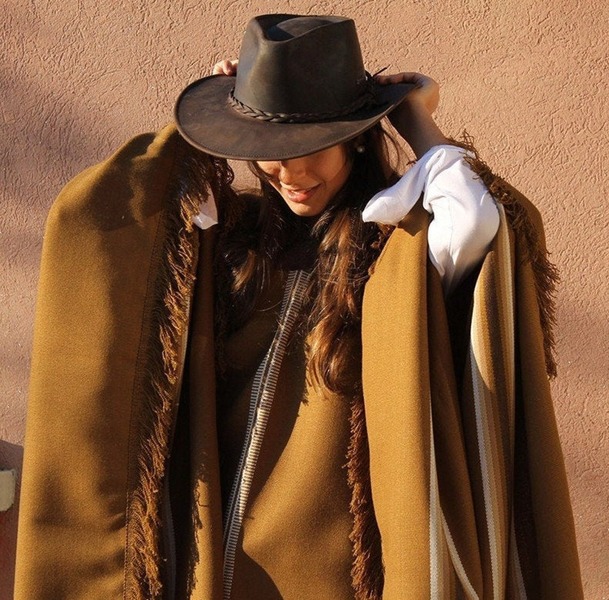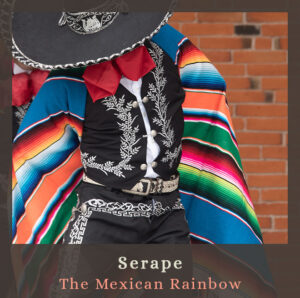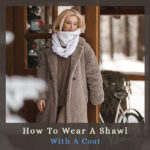Ponchos and Ruanas are both loose-sleeveless garments rooted in South America’s Andean region. The Poncho has a central opening for the head, while The Ruana has a lengthwise slit, creating two front drapes.
From my own point of view as a western Fashion designer, ponchos typically feature a more distinct tribal vibe than the ruana, which is very similar to a cardigan (but without the sleeves).
Many people get these two mixed up often, so let’s explore the differences in more depth!
Ponchos:



Long Knitted Poncho by UludagKnitwear1958 (Etsy)
Ethnic Alpaca Poncho with Hood by AndeanSheepShop (Etsy)
Argentinian handmade jujeño poncho by ELBOYEROArgentina (Etsy)
Ruanas:



Outlined Merino Wool Ruana by Feebra (Etsy)
Boho Autumn Cow Skull Ruana by newventurestore (Etsy)
Soft & Warm Handmade Ruana by ELBOYEROArgentina (Etsy)
The Key Differences Between Ponchos and Ruanas
| Poncho | Ruana | |
|---|---|---|
| Shape | Typically rectangular with a central hole for the head | Rectangular with a lengthwise slit, creating two front drapes and a single back drape |
| Silhouette | Loose and flowing, without defined sleeves or fitted contours | Loose but a bit more structured drape, can be styled as a wrap for extra warmth and coverage |
| Origin | The Andean region (Peru, Mexico, Bolivia, Ecuador, etc.) | The Andean region, particularly Colombia and Ecuador |
| Name Meaning | The term “poncho” comes from the Quechua language and means blanket or woolen fabric | The term “ruana” is from the Chibcha language and means textile, or from Spanish, meaning rugged |
The shape
Both Poncho and Ruana are usually rectangular in shape and sometimes square.
The Poncho has a central hole or opening in the middle, allowing the head to pass through when worn. Ruana has a lengthwise slit which makes two rectangular drapes on both front sides equally, allowing it to be wrapped around the body and secured at the front. The back of the ruana is rectangular.
Ponchos have a loose and flowing silhouette, lacking defined sleeves or fitted contours. The lengthwise slit of the ruana gives it a more structured drape which is still quite loose and can be styled as a wrap, providing extra warmth and coverage.
The Origin
Ponchos have their historical roots in the indigenous cultures of South America, particularly in the Andean region, which includes Peru, Mexico, Bolivia, Ecuador, and more.
The word “poncho” means a blanket or woolen fabric and is derived from the Quechua language.
Ruanas are close relatives with the same historical roots in the Andean region but more specific to countries like Colombia and Ecuador. The term “ruana” comes from the Chibcha language, spoken by indigenous groups in these regions, meaning textile, or from Spanish, meaning rugged.
The traditional style of both garments reflects the authentic craftsmanship and traditional motifs and symbols of their origin, making them recognizable and different from each other.
The Similarities between the Poncho and Ruana
- Both Ruana and Poncho are loose and easy-to-wear garments that are ideal for cooler weather. Since they come from similar cultures, both ruana and poncho were traditionally made from natural fibers like alpaca, Llama, and sheep wool which makes them warm enough for the harsh Andean climates.
- Both garments are versatile and can be styled in various fashionable ways to make them trendy and flatter to different body types and sizes.
- Both Ponchos and Ruanas are still popular with people of their traditional origins. However, they also evolved beyond that. Over time, they were introduced to other parts of the world and have become recognizable and popular fashion garments worldwide.
In modern times, almost every reputable fashion designer has a variation of a poncho or a ruana in one of his collections. And, of course, these designers incorporate various fabrics, patterns, and cuts, making ponchos & ruanas suitable for different style preferences and occasions. - Both Ponchos and Ruanas are LOVED by soldiers and preppers worldwide.

















